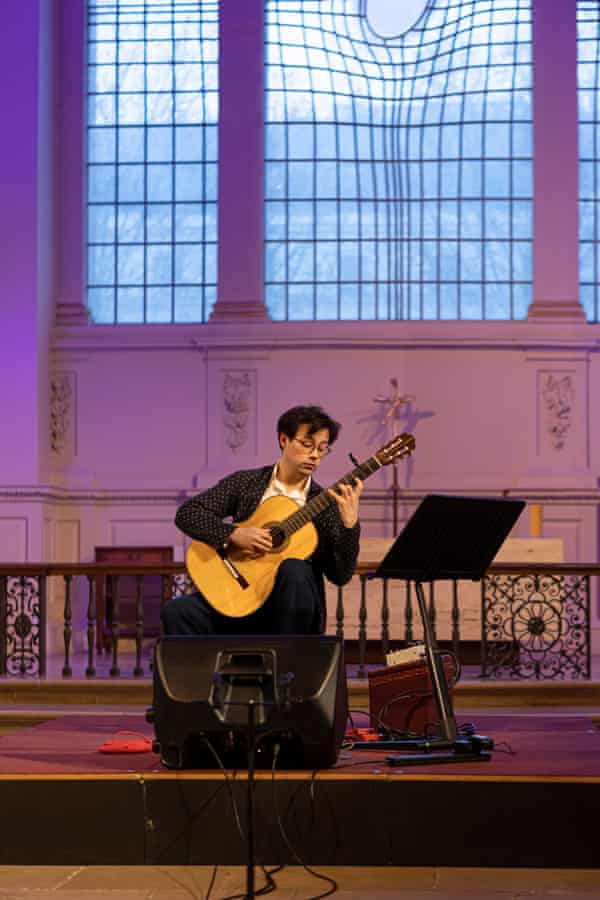If you have picked up any intelligence about the Russian-German pianist Igor Levit, it is surely that he cannot resist a marathon. The demands of performing long works, alone on stage, do not need spelling out. The motivation for Levit, evident in every note he plays, is the music. In early lockdown in 2020, when the world was reeling and the technology itself had not been mastered, Levit embarked on nightly, livestreamed concerts from his Berlin home for more than 10 weeks. In addition to standard repertoire, he plays epic compositions few dare touch, whether the piano concerto by Ferruccio Busoni (a trifle at 75 minutes) or Erik Satie’s Vexations (20 hours).
At Wigmore Hall last week, Levit chose two giants of the repertoire that he has recorded and performed in public before. This makes the achievement no less extraordinary. He began on Monday with Shostakovich’s 24 Preludes and Fugues, Op 87, with Passacaglia on DSCH by the Scottish composer Ronald Stevenson (1928-2015) two nights later.
This homage to Shostakovich is built around the Russian composer’s four-note name motif (we’ll leave the decoding, via Cyrillic script and German notation, for another day). Stevenson uses the motto hundreds of times, with extravagant ingenuity. Pianistically, songlike moments aside, the Passacaglia casts the player to the four winds, with blizzards of notes and swirls of rhythmic challenges to combat. On the page it is clear, structured, detailed, asking for the piano to sound like a guitar, timpani, trumpet; far-off, ponderous, primal.
Writing the work in 1961 when the Soviet astronaut, Yuri Gagarin, went into space, Stevenson instructs: with a sense of space, “quasi gagarinesco”. Yes, call it maverick. A visionary, a Marxist, a conscientious objector, this singular composer should be better known. Levit is the best of ambassadors, inviting us to embrace the music’s curiosities, and to discover its potent beauty.
Bach’s 48 Preludes and Fugues were the impetus for Shostakovich’s Op 87. The perspective, combining free-form prelude and formal fugue in every key, flickers between entity and detail. A comparison might be the double helix within the swirling carapace of Tatlin’s Tower, the gigantic piece of Soviet constructivist art proposed for Shostakovich’s home city of St Petersburg but never built. Crushed by the Union of Composers when they heard his “ugly” work, Shostakovich not only completed his mighty edifice but created a work of art for posterity.
Levit showed, with gleaming clarity, the terrain these pieces travel: now playful ditty, now majestic oratory, now a glimpse at Tchaikovsky or a chorale-like contemplation of Bach. The D flat prelude, a waltz, had a mechanical precision, the tick-tock figure passing between hands, as if sprung. The vast final fugue flung itself against a stunned audience, who could only leap to their feet once Levit, lifting his hands away from the keyboard at last, let us know it was over.
St Martin-in-the-Fields, the colonnaded landmark on the north-east corner of Trafalgar Square, walked past by every tourist, has been reinvigorated as a venue for high-level concerts, with new partnerships with, among others, John Eliot Gardiner and his Monteverdi Choir and Orchestras. In its HP Futures series, outstanding artists will give solo recitals. The constant rumble of traffic and trains forces us to listen more acutely than ever, especially if the soloist is a guitarist whispering the most hushed and mysterious of lute music.
The Edinburgh-born virtuoso Sean Shibe opened his recital – entitled “Baroque meets Minimalism” – with a selection from the Scottish lute manuscripts of the 17th century, remade in this guitarist’s own subtly ornamented and poetic fashion. In Bach’s lute Suite in E minor, BWV 996, every twist of counterpoint, each voice, was clear and unforced. For this part of the recital, Shibe used an instrument made by Simon Ambridge in 2011, a copy of the classic Hauser played by pioneer guitarists of the past, Segovia and Julian Bream.
He then switched to electric guitar, first to the cutaway Fender Stratocaster, then to a PRS Custom 24-08. You need to be an insider to appreciate the different specs, but enjoying the variety is part of the Shibe experience. Messiaen’s motet O sacrum convivium (1937) was freshly ecstatic, resonating around the building. In Pushing my thumb through a plate by Oliver Leith (b1990), originally for harp, now in a new version for guitar, Shibe used the tuning pegs to whoop slowly in and out of aural focus, a meditation on flux and inconstancy. (Leith’s new opera about Kurt Cobain was announced last week for the ROH’s Linbury theatre next season.)
He is a restrained performer, as if staying within his own magic circle of energy, keeping all in reserve for the music. To end, he captivated with Steve Reich’s Electric Counterpoint (1987). Performing live against a tape of himself playing a dozen accompanying guitar parts, Shibe reminded us of the power of one.

